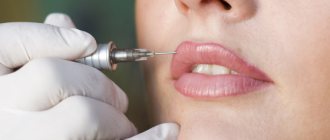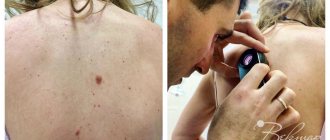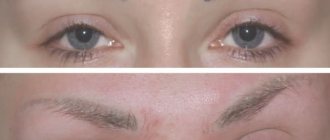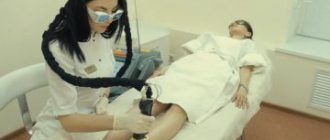Laser tattoo removal is the removal of artificial pigmentation of the skin or mucous membranes due to the gradual laser destruction of pigment particles.
The photo shows the tattoo before removal (left) and the result after 3 laser removal procedures (right)
Since 2002, specialist doctors at Vitaclinik have been removing tattoos, pigmentation, and permanent make-up. Vitaklinik is the first laser medicine center in Estonia. In our clinic, tattoo removal is performed only by certified medical specialists who have undergone special training.
Margarita Raag (lapsehoolduspuhkusel)
medõde-kosmeetik
Broneeri aeg
Tagged raag | Comments to Margarita Raag (lapsehoolduspuhkusel) are disabled
Dr. Alexander Uskov
MD, PhD, CEO
Broneeri aeg
Tagged uskov-kell, uskovkell | Comments on the post Dr. Alexander Uskov disabled
Information about the cost is given in the section Prices for laser tattoo removal
The American physicist Theodore Maimann first used a laser for tattoo removal back in the 60s of the 20th century. Since then, laser technology, as a promising method for removing any foreign and natural pigmentation of human skin, has been continuously improved and developed. At first, laser tattoo removal left burns and scars on the skin. To remove tattoos, they tried to use various lasers: ruby laser, argon laser, CO2 laser, neodymium yttrium-aluminum garnet laser, and so on, until the Q-switsh neodymium laser came into medicine, which is currently considered the gold standard for fast and safe removal of any tattoos and natural pigmentation.
How is laser tattoo removal performed?
Photo: Laser tattoo removal “before” and “after”
The principle of the laser installation is that the laser beam penetrates the skin, where it interacts with the pigments of the applied image in the form of a tattoo. In this case, superficial and healthy tissues are not affected at all. It is thanks to this property that laser tattoo removal does not leave scars.
Due to the fact that the laser acts in a targeted manner and heats up a specific cell, the dye splits, which is subsequently eliminated by the lymphatic system. During the laser tattoo removal procedure, you can observe that the image becomes somewhat lighter, while the skin remains smooth and even.
The laser tattoo removal process depends on:
- the quality of the inks used to apply the tattoo
- depth and density of dye application to the skin
- the quality of the device used for tattooing or permanent makeup
It is worth understanding that it will not be possible to produce an image in one laser session on a tattoo. It will fade from procedure to procedure, so to completely get rid of it, you need to complete the full course.
Regarding the painfulness of the manipulation, it all depends on the person’s pain threshold. In general, the laser treatment procedure is classified as a thermal cosmetic procedure and does not cause significant pain. A person may feel some tingling, which is tolerable. It is also possible to apply local anesthetics to the treated area.
How to remove a tattoo?
To remove a boring design from the body, you need to contact a specialist who will determine the complexity of the tattoo, the depth of the pigment, the age of the tattoo, and the properties of the dye used to make the design. Based on the specialist’s findings, you will be offered several options for tattoo removal and told about their advantages and disadvantages. Based on these findings, you can choose the removal method that suits you. The issue of tattoo removal should be taken seriously and choose those establishments that have specially trained specialists and a certificate to perform tattoo removal operations. Today, such operations are carried out by laser cosmetology centers, professional tattoo parlors and medical centers. To make the right choice and choose the method of tattoo removal that is right for you, visit several places, read reviews and read books of complaints and suggestions.
How long does the procedure take and is there a recovery period?
The laser tattoo removal procedure can last from five minutes to half an hour. It all depends on the image itself and its size. After the procedure is completed, the area may become red and swollen, but this all goes away after a few days. At this time, experts recommend not visiting baths and saunas, not taking a bath, and also, if possible, not touching or scratching this area.
Within three weeks, the tattoo removal site may peel off. It is best to avoid sunbathing for several weeks and apply sunscreen to reduce the risk of developing unwanted pigmentation.
Tattoo removal at home
With all the positive qualities of salon tattoo removal procedures, there is one condition that forces many to solve this problem at home - the high price. The effectiveness of home treatments is not so high, but it will change the color of the pigment and make the tattoo less noticeable. One of the options for removing tattoos at home is the use of iodine and streptocide. This procedure will take from one month to six months, depending on the depth of pigment penetration and the age of the tattoo. The second option is to use coarse table salt. Mix salt and a little water and rub the tattoo daily for ten minutes. This method is a variant of deep peeling.
In any case, if you decide to remove a tattoo, you should first consult a doctor. Since tattoo removal procedures have a lot of contraindications. But if you do not have the opportunity to remove a tattoo due to any contraindications, do not rush to get upset. Today there are several options for camouflaging tattoos on the body. One of the most common methods is self-tanning and specialized cosmetics for tattoos. And in conclusion, I would like to note: to avoid any questions about tattoo removal later, take the process of applying it seriously. Be sure to think over the sketch, choose a professional craftsman with whom you will discuss the feasibility of your decision.
Is it possible to remove a tattoo with a laser in one session and will there be scars?
Photo: Laser tattoo removal “before” and “after”
When removing a tattoo with a laser machine, you should expect that the process will be lengthy.
The number of laser tattoo removal procedures depends on:
- characteristics of the pigment and its quality (modern paints are produced faster than those pigments that were used more than 20 years ago)
- tattoo color (dark pigment is easier to remove, the most difficult to remove are flesh, green and yellow shades)
- how long ago was the tattoo done?
- depth of tattoo dye application (the deeper it is, the greater the amount of laser tattoo removal will be)
- skin tone (tattoos on dark skin are more difficult to remove, so more sessions will be required to achieve results)
On average, in order to remove a tattoo or permanent makeup, it will take at least three sessions with an interval of one month.
Main types of laser correction
Laser tattoo removal can be done using several methods. Thus, the procedure can be classified directly according to the type of light radiation:
- Ruby laser . Well suited for tattoos made in black, blue and green colors. It has a bad effect on paints of light and red shades embedded in the deep layers of the dermis.
- Alexandrite laser . In many ways, the principle of action is similar to ruby, it works great with surface dark pigments, and gives weak results when eliminating red color.
- Neodymium laser . It differs from other options by the possibility of exposure to waves of different lengths, which allows the destruction of pigment both on the surface and in deeper layers.
- Erbium laser or CO2 . It is considered the most optimal solution for removing small surface patterns. When working with deep-lying pigment, it can lead to the development of complications.
In addition to the classification presented above, laser correction involves two main methods of implementation. They are presented:
- By grinding . Often used to neutralize old designs that have partially lost their color. The principle of operation of this technique is to gradually remove layers of skin colored with pigment. To carry out such a procedure, an erbium or CO2 laser is most often used.
- Selective method . It does not imply injury to the superficial area of the dermis, which is why it is considered a more delicate method. The principle of action is based on the destruction of color pigments, which are subsequently excreted through the lymphatic system.
Despite the fact that such a procedure is considered quite effective and safe, there are often reviews about lengthy rehabilitation and an abundance of side effects after the intervention.
The cause of complications is most often the characteristics of the body of each individual patient, and sometimes a violation of the technique of the procedure. So, the most common side effects include:
- burns;
- swelling;
- hematomas;
- redness of the skin;
- obtaining a result opposite to the desired one (increasing the brightness of the tattoo);
- hair loss on the treated area of the face or body.
To minimize possible complications and prevent their occurrence, it is recommended to pay increased attention to the choice of the salon and the specialist who will carry out the correction. It is also very important to fully comply with all recommendations for the rehabilitation period.
Contraindications
Like any procedure, laser tattoo removal or permanent makeup has its contraindications.
Laser tattoo or permanent makeup removal is not performed:
- during pregnancy and feeding the baby
- allergic manifestations or reaction to ultraviolet light
- oncology
- disturbances in the functioning of the endocrine system
- dermatological problems (psoriasis or eczema)
- tan less than two weeks old
- taking antibiotics or hormones
- infection
- pathologies associated with the functioning of the cardiovascular system
- mental disorders
It is worth understanding that removing a tattoo or permanent makeup is a complex manipulation that requires an individual approach.
How do you feel during the procedure?
The patient feels a warm tingling sensation. The session is comfortable and does not require special anesthesia.
Contraindications:
- tumor processes and precancerous conditions;
- pregnancy and lactation;
- acute infections;
- chronic diseases in the stage of decompensation;
- disruption of the immune or endocrine system;
- mechanical damage to the skin;
- recent visit to a solarium or peeling.
After laser tattoo removal, a scab forms and falls off after a few weeks. A white spot forms at the site of the tattoo, which soon disappears.
After the procedure it is PROHIBITED:
- wipe the skin with alcohol-containing solutions for three days;
- sunbathe for two weeks;
- visit a sauna or steam bath for three days;
- engage in sports or strenuous physical activity for three days.
On our website you can order tattoo removal using laser.
Recommendations for laser tattoo removal
Photo: laser tattoo removal process
In order for tattoo or permanent makeup removal to be successful and without consequences, you should follow the following rules:
- The laser tattoo removal procedure should be performed by a professional after a complete skin examination.
- Manipulation is best carried out in qualified clinics and on modern and high-tech equipment
- You should carefully follow your doctor’s recommendations during the recovery period. This includes lubricating the removal area with antiseptics and special ointments.
- Getting water into the area where there was a tattoo or permanent makeup during the first three days can lead to inflammatory processes.
- Avoid sunbathing for several weeks as this may cause sunburn and unwanted pigmentation.
Tattoo removal methods and price
Currently, there are several methods for removing tattoos. Each of them has its own characteristics.
Laser beam
The effect of a laser beam has not yet been fully studied. It is generally accepted that the beam, acting on the pigments, heats them and as a result they disappear. The cell itself, which contains the paint, boils and disintegrates from a narrowly directed beam of light. After this, the remains are captured by special shapeless cells that absorb dyes and are removed in the blood stream.
A significant nuance that influences the result is the degree of pigmentation, that is, whether it is light or dark. Laser removal allows you to get rid of patterns on any skin; however, it is necessary to adjust the operating mode of the equipment.
The pattern itself has the greatest impact on efficiency. During elimination, all points are important: the color of the pigment, its chemical composition, area, location on the body, depth of penetration, whether scars are present, etc.
One way or another, any tattoo can be bleached, but the intensity of the events and their number depend on these factors.
When using any type of laser equipment, the small pattern that is pricked in the surface layer of the skin will be quickly
There are both general and individual contraindications. The first type includes: skin diseases, cardiovascular diseases and pregnancy. An allergic reaction to coloring components is considered an individual intolerance. Even if the symptoms go away after stuffing, they may reappear during mixing.
Parts of the body with the most blood circulation wash away pigmentation more easily, while areas with low circulation (such as fingers and toes) tend to have a more difficult time. These types of tattoos require more laser removal sessions.
Surgical tattoo removal
Surgical removal was practiced even before the spread of laser technology. Once upon a time there was no alternative. Narrow linear patterns up to 1 cm in width and up to 7 cm in length lend themselves well to surgical excision. The surgeon cuts off the layers of the epidermis in thin layers and applies cosmetic sutures. Another option is to transfer clean “flaps” from an inconspicuous area of the body to the site of the cut tattoo.
Mechanical peeling (dermabrasion)
We are talking about a milling method of scraping the skin with a diamond-coated tool. The cutter is immersed into the epidermis to a depth of 1.5 mm, capturing up to 5 mm of skin on both sides of the pattern. This method of removing not deeply buried pigment can be done by people with healthy skin.
Chemical peeling
A fairly aggressive tattoo removal procedure is carried out using carbolic acid. Phenol peeling requires the participation of a specialist with extensive experience and knowledge. Contraindications include diseases of the respiratory system, liver and kidneys. Removing tattoos with acids is dangerous, painful and difficult.
Be careful!
Phenol is toxic and dangerous to humans. This operation should absolutely not be done at home.
Cryodestruction method
Tattoo removal with liquid nitrogen is being used less and less. The advantages include a quick effect on the skin and effectiveness. The disadvantage is that the procedure is painful, has to be done several times, and takes a long time to heal. As a result, removed tattoos turn into scarred areas of skin.
Other tattoo removal methods
Medical clinics offer to remove tattoos using electrocoagulation, as well as a cold plasma coagulator. In the first case, there is a high probability of ugly scars and a long healing time. The second method is effective, but very expensive, time consuming and has many contraindications.
As for tattoo removal creams, experts do not recommend using them outside a salon. The effect is small, but if used inappropriately, it can cause a lot of problems with the skin.
Lightening for covering with another tattoo
This approach is faster and simpler, since the old paint does not need to be completely removed, but rather it is enough to make it less noticeable so that it does not stand out from under the new one.
Few people believe in the myths that a tattoo can be removed at home with potassium permanganate or iodine As a result of such amateur activity, you can only get a burn and a wound that doesn’t heal for a long time.
Tips for those who want to remove a tattoo
This is a serious procedure for which you need to prepare carefully. Doctors' instructions must be followed strictly. Does it hurt to remove a tattoo? Whatever method is chosen, it involves the destruction of the epidermis, and this is painful. If you decide to get rid of a pattern on your body, you need to be prepared for the fact that, on average, 4-7 procedures will be required. There will be a time interval between sessions. There can be no question of working capacity during this period.
You should choose a clinic not based on the principle of “ where and how much it costs ,” but where it is safer for your health. It is advisable to talk with former patients who have already gone down this path and see what the merged tattoos look like.
You can find a good master on our portal, in the appropriate section: ⇒"TATTOO REMOVAL"⇐ .
You can choose your city and get acquainted with the masters living there. Each of them has information in their profile: length of service and work experience, contacts, portfolio.
Before you go for the procedure, think about whether a tattoo really interferes with your life so fatally? Is it worth going through these painful procedures, risking your health, and spending money? You need to get rid of a tattoo when it really interferes with living a full life. Getting a tattoo is an important decision in life. If you once accepted it, then there was a good reason. You must respect your decisions.











